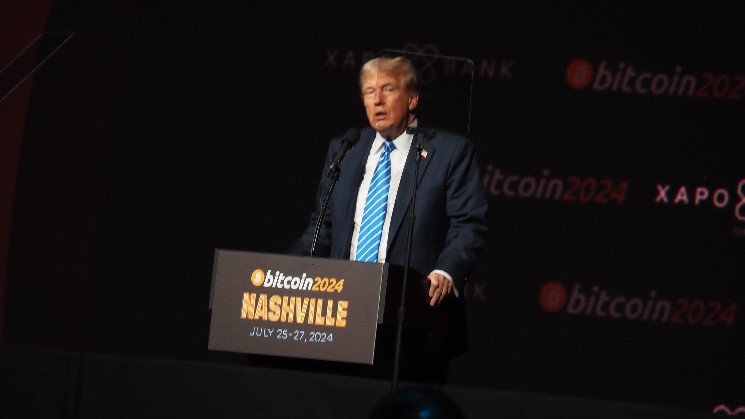Comparison of three-day changes in BTC's price and Republican election odds between June 1 and Aug. 15 show lack of definitive correlation between the two variables.
A lot could change in the coming weeks, according to FalconX.
While the popular narrative suggests a strong positive link between bitcoin's (BTC) recent price performance and Republican candidate Donald Trump's victory odds in the U.S. presidency rate, market data suggests otherwise.
Since Trump's mid-June meeting with bitcoin miners, crypto market experts have consistently associated the Republican candidate's performance on betting markets with bitcoin's price. The narrative strengthened after Trump survived an assassination attempt in July and as BTC came under pressure early this month amid Democrat candidate Kamala Harris' resurgence in betting markets.
However, prime broker FalconX's analysis of the three-day change in BTC's price and the three-day change in Polymarket odds of Trump winning the presidential election between June 1 and Aug. 15 shows a lack of definitive trend or clear correlation between the two variables.
The X-axis shows the three-day percentage increase or decrease in BTC's price between June 1 and Aug. 15. The Y-axis represents the increase/decrease in the odds of a Republican victory. Data has been sampled every 12 hours.
The red dots represent the period between June 29 and July 29 when Trump's probability of entering the White House surged on Polymarket. The blue dots represent the so-called Democrat momentum period. The grey dots represent the rest of the period between June 1 and Aug. 15.
The red dots show a scattered pattern, implying no connection between shifts in Republican odds and changes in BTC's price. The blue and grey dots show a similar pattern.
“Interestingly, there has not been a noticeable relationship between election odds and BTC prices throughout the entire analysis period from June 1 to August 15, 2024. One reason for these weaker-than-expected relationships could be the many crosscurrents influencing prices, such as the path of monetary policy in the U.S., concerns around upcoming supply overhangs, and others, as we highlighted before," David Lawant, head of research at FalconX, said in an email to CoinDesk.
Some of the crosscurrents, like aggressive selling by The German state of Saxony and fears of supply deluge from defunct exchange Mt. Gox's creditors, have reportedly capped the upside in BTC since June, overshadowing shifts in the Republican odds.
Still, with Harris now catching up on crypto, the impending election could become a dominant driver of BTC prices.
"Of course, a lot can change before November 5. As we get closer to election day, it’ll be fascinating to see if prediction market data reveals election news as a key driver—or even the dominant force—behind price action," Lawant noted.
 coindesk.com
coindesk.com
